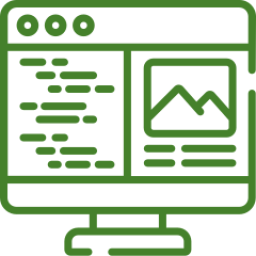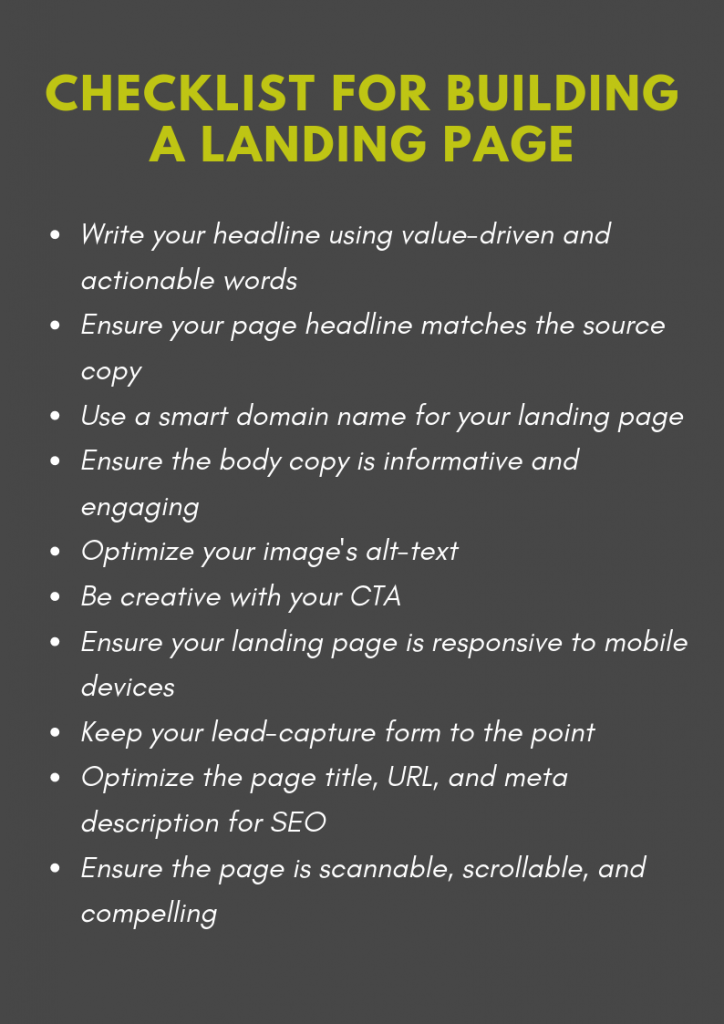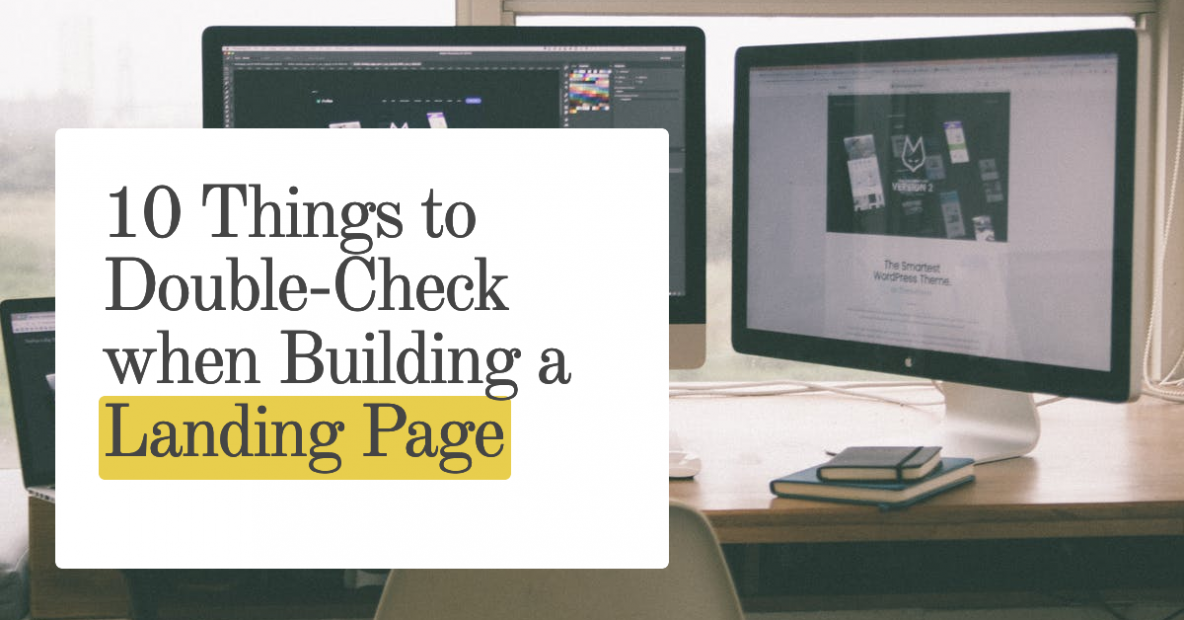A landing page is a web page that is created for a specific marketing campaign. When a user clicks on your online ads or social posts, they are taken to this page. The goal here is to optimize the conversion of visitors into customers and generate new leads.
A well-designed landing page with a clear CTA (call to action) will generate new business leads for you. It will also help reduce CPA (cost per acquisition), consequently reducing your overall ad spend. Every landing page is created with a certain objective in mind and it is crucial that it attains that objective.
Mentioned below are ten parameters that you must consider to ensure optimum performance of your landing page.
Table of Contents
1. Write your headline using value-driven and actionable words
 Your headline should stand out, reiterate your ad offer, and draw eyes to the body to keep the user enticed. This is vital because the bounce rate often depends on whether visitors can instantly see what was offered to them in the ad.
Your headline should stand out, reiterate your ad offer, and draw eyes to the body to keep the user enticed. This is vital because the bounce rate often depends on whether visitors can instantly see what was offered to them in the ad.
Provide value to the user immediately.
2. Ensure your page headline matches the source copy
When someone clicks on your ad to get to your landing page, they should find continuity in the ad copy and the offer on your landing page. The ad copy creates certain expectations for the user. Your landing page’s job is to live up to those expectations to create delight for the user. The easier it is for them to find the information they saw in the ad copy, the more likely they are to continue.
Continuity is key.
3. Use a smart domain name for your landing page
Albeit small, your landing page’s domain name can play a significant role in conversions. Users will be seeing the link to your landing page on social platforms, online ads, and other online advertising platforms. This URL along with your ad copy is what will convince users to visit the landing page. Therefore, the domain name can act as the perfect hook.
Instead of going for something long and clunky such as www.mybusiness.com/productcategory/productname, you can go for something simple such as flavouredyogurt.store/hazelnut. New domain extensions such as .TECH, .SITE, .SPACE, .ONLINE, .PRESS, etc allow you to have keyword-rich and descriptive domain names that help make the landing page look credible.
4. Ensure the body copy is informative and engaging
As important as the headline is for attracting the viewer’s attention, it is also important to ensure that the body copy continues in that vein. A well-written body will hold their attention through the CTA and beyond. It is also a good idea to add your CTA to multiple areas through the body of the text. If they are ready to sign up, they shouldn’t have to scroll through more text to reach the CTA or the form. This will increase the overall conversion rate.

Checklist for Building a Landing Page
5. Optimize your image’s alt-text
Any images on the page must have alt text specified. Alt text includes the keywords that appear on the screen in place of the image if the image fails to load. It also helps the search engines crawl your page more effectively. In addition, they also lead to better organic ranks, and hence, more organic traffic for your website. Alt text is dependent on the image description as well as relevant keywords.
6. Be creative with your CTA
Your Call to Action (CTA) button can take on many forms. Instead of just saying “Submit”, be creative yet simple; and experiment with different terms.
- If you want people to sign up for a community or forum, try ‘Join the Conversation’
- If you are building your email list in order to gain leads, use a CTA that says ‘Download your free eBook now!’
- If you are offering a trial version of a paid product, you could say ‘Start your free trial today’
The specific nature of these CTAs will reiterate the value add. Plus, the user can be sure about what they are signing up for. A/B testing should allow you to see what works better for your audience, and you can keep refining it.
7. Ensure your landing page is responsive to mobile devices

Mobile devices are ubiquitous in recent times. Since a majority of users do most of their browsing on their mobile devices, it’s important that your landing pages are optimized for all screen sizes. This will help you reach a larger audience and get more leads. It’ll also boost your overall brand recognition.
Ensure you have a crisp UI and UX, resizable content layout, and a speedy load time. By making the user comfortable and not wasting their time and effort, you will be in a better position to get your message across.
8. Keep your lead-capture form to the point
In most cases, your CTA will lead to a sign-up form. The absolute basic information you may intend to collect will be email and names. Of course, depending on the context of the page and the information you require, the form could be longer. However, you must not make the form so long that the users abandon the form out of sheer boredom or disinterest. Keep your lead-capture form concise and only ask for information that is required at the preliminary stage.
9. Optimize the page title, URL, and meta description for SEO
Just like the image alt text, these parameters are also important for SEO. Your page title, URL and meta description should contain the main keyword and should also be highly relevant to both the ad copy text and the information on the page. This is important for SEO and will help your page rank higher for your main keywords.
10. Ensure the page is scannable, scrollable, and compelling
Ensure that your page is easy to understand for both; people and search engines. Try to keep it to a single page and minimal folds that they can scroll through – don’t confuse them with multiple menus or buttons. Ensure all content is well written; from ad copy to the headline, to the body text, to CTA. All of it will influence whether or not the visitor is going to fill that form and turn into a prospective customer.
Conclusion
Your landing page ties together all these elements into one beautiful, user-friendly, and lead-generating webpage. If you follow all these tips, you will be able to create a landing page that stands out and collects leads for you efficiently. At the end of the day, you want your business to grow and bring in revenue. Optimizing your landing page is an effective way to do that.
Post by Alisha Shibli.
Alisha is a Content Marketing Specialist at Radix, the registry behind some of the most successful new domain extensions, including .STORE and .TECH. You can connect with her on LinkedIn and Twitter.

